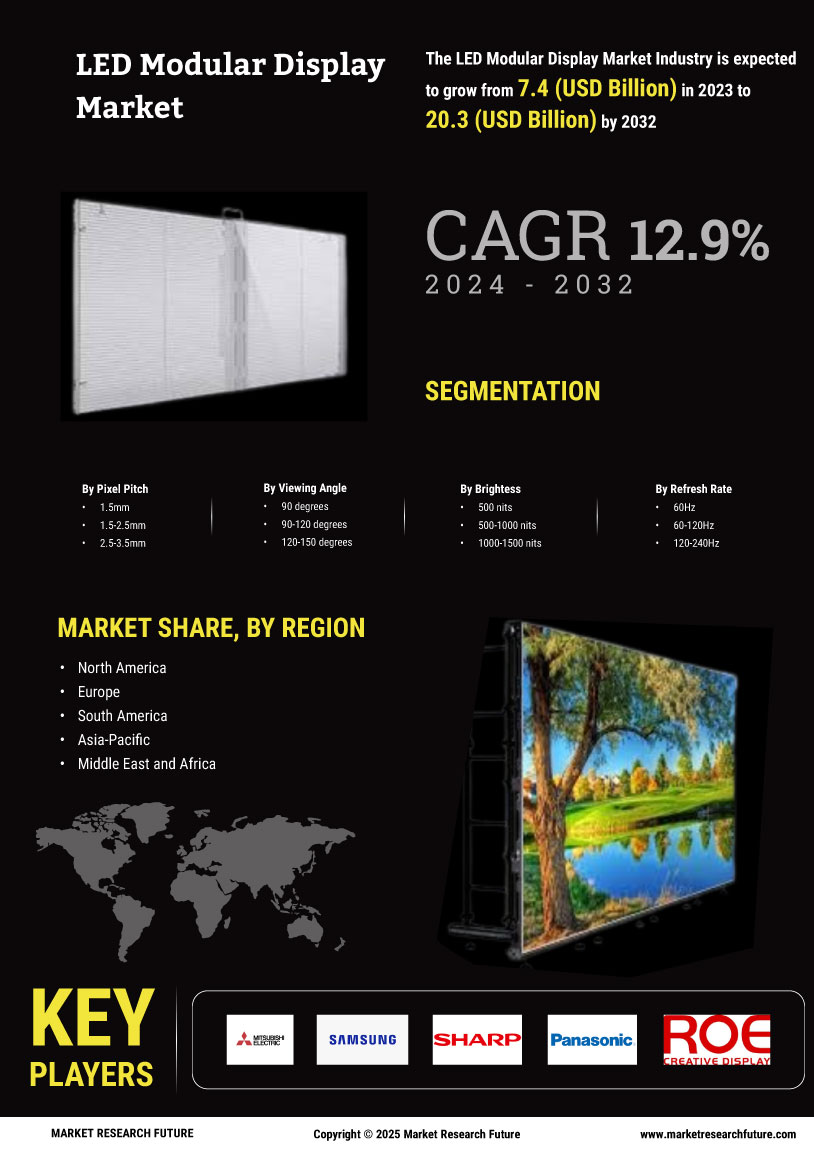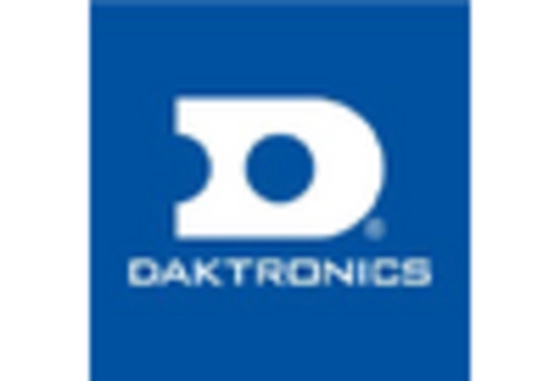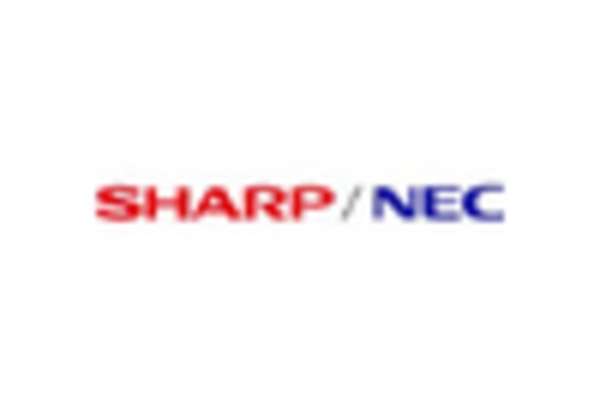Technological Advancements
The LED Modular Display Market is experiencing rapid technological advancements that enhance display quality and functionality. Innovations such as high-resolution displays, improved color accuracy, and energy-efficient designs are driving demand. The integration of smart technologies, including IoT and AI, allows for real-time content management and remote monitoring, which is increasingly appealing to businesses. As a result, the market is projected to grow at a compound annual growth rate of approximately 10% over the next five years. This growth is indicative of the industry's adaptability to emerging technologies, which could potentially redefine user experiences and operational efficiencies.
Customization and Versatility
The LED Modular Display Market is characterized by a strong demand for customization and versatility. Businesses are seeking displays that can be tailored to specific needs, whether for indoor or outdoor applications. The ability to create unique configurations allows for greater flexibility in design and functionality. This trend is particularly evident in sectors such as retail and events, where personalized experiences are paramount. As the market evolves, the capacity for modular displays to adapt to various environments and requirements is likely to drive further growth and innovation.
Expansion in Emerging Markets
The LED Modular Display Market is experiencing notable expansion in emerging markets. As urbanization accelerates and infrastructure development increases, the demand for advanced display solutions is on the rise. Countries in Asia and Africa are investing heavily in digital signage, driven by the need for modern communication tools in public spaces and commercial establishments. This trend is expected to contribute significantly to the overall market growth, with projections indicating that emerging markets could account for a substantial share of the LED modular display market by 2030. The potential for growth in these regions presents opportunities for manufacturers and suppliers.
Increased Focus on Sustainability
The LED Modular Display Market is aligning with the growing emphasis on sustainability. Manufacturers are increasingly producing energy-efficient displays that consume less power and have longer lifespans. This shift not only reduces operational costs for businesses but also minimizes environmental impact. The market is projected to see a rise in eco-friendly products, with a significant portion of consumers favoring brands that prioritize sustainability. As regulations around energy consumption tighten, the demand for sustainable LED solutions is expected to grow, potentially reshaping the competitive landscape of the industry.
Rising Demand for Advertising Solutions
The LED Modular Display Market is witnessing a surge in demand for dynamic advertising solutions. Businesses are increasingly adopting LED displays for their ability to capture attention and convey messages effectively. The market for digital signage, which includes LED modular displays, is expected to reach a valuation of over 30 billion dollars by 2026. This trend is driven by the need for innovative marketing strategies that engage consumers in real-time. As companies seek to enhance brand visibility and customer interaction, the adoption of LED modular displays is likely to become a cornerstone of modern advertising efforts.
















Leave a Comment